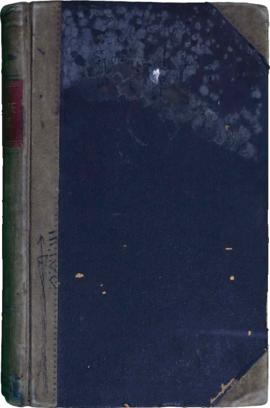Series consist of loose photographs, a newspaper clipping, photomechanical prints, and one photomechanical print album produced and collected throughout Rev. Crosby’s personal and missionary life, including portraits and group photographs of aboriginal individuals and/or missionaries, photographs of churches, schools, homes, hospitals, and other buildings, and aboriginal cultural and ceremonial objects (artifacts and curios). In addition, photographic events include carvings, church congregations, gathering of aboriginal children from residential schools, weddings, and funerals. Geographic locations depicted in the photographs include (but are not limited to): Chilliwack, Cultus Lake, Fort Essington, Fort Rupert, Fraser River, Greenville, Gold Harbour, Massett Village, Naas River, Port Simpson, River Inlet, Skidegate (Haida), Yale, and Vancouver Island (Nanaimo, Victoria) all in British Columbia; as well as, Whatcom County Washington, USA; Fort Wraugh, Alaska; Port Chester, Alaska; Montreal, Quebec; Norway; and Labrador. Series includes photographers and photograph studios such as Noah Shakespeare, Richard & Hanna Maynard, Carlo Gentile, J.G. Parks, Thos. E. Perkins, Geo Rirton, B.F. Howland & Co., J.M. Jacobsen, Wadds Bros., N. Caple & Co., Hugill, R.Z. Tashiro, Butcher & Co., Brooks, Skene Lowe, Nathan Joseph & Co., and S.A. Spencer. Photographers Carlo Gentile (whose Victoria studio was purchased by Noah Shakespeare) and Frederick Dally (whose negatives were partly acquired by Richard & Hanna Maynard) may also be included but unidentified. Series includes photomechanical prints, albumen prints, cabinet cards, carte-de-visites, gelatin printing-out papers, gelatin developing-out papers, a ferrotype, stereograph prints, and other unidentified print types.
FILE LIST: (with box-folder number, title, and dates)
1-1: Personal and missionary photographs – portraits (and ferrotype), ca. 1860
1-2 : Missionary photographs – reproductions, [199-]
1-3 : Missionary photographs – stereograph cards, 1863 – [191-]
1-4 : Missionary photographs – totem poles and artifacts, 1863 – [191-]
1-5 : Missionary photographs – photomechanical, 1863 – [191-]
2-1 : Personal and missionary photographs, 1863 – [191-]
2-2 : Missionary photographs – artifacts, 1863 – [191-]
2-3 : Missionary photographs – glad tidings, 1863 – [191-]
2-4 : Missionary photographs – Alaska, 1863 – [191-]
2-5 : Missionary photographs – Bella Bella, B.C., 1863 – [191-]
2-6 : Missionary photographs – Chilliwack, B.C. and Cultus Lake, B.C., 1863 – [191-]
2-7 : Missionary photographs – Hazelton, B.C. and Kispiox, B.C. ,1863 – [191-]
2-8 : Missionary photographs – Mission, B.C. and River Inlet, B.C., 1863 – [191-]
2-9 : Missionary photographs – Port Essington, B.C., 1863 – [191-]
2-10 : Missionary photographs – Port Simpson, B.C., 1863 – [191-]
2-11 : Missionary photographs – Vancouver Island, B.C., 1863 – [191-]
2-12 : Missionary photographs – Washington, USA, 1863 – [191-]
2-13 : Missionary photographs – Naas River, B.C., 1863 – [191-]
2-14 : Missionary photographs, 1863 – [191-]


